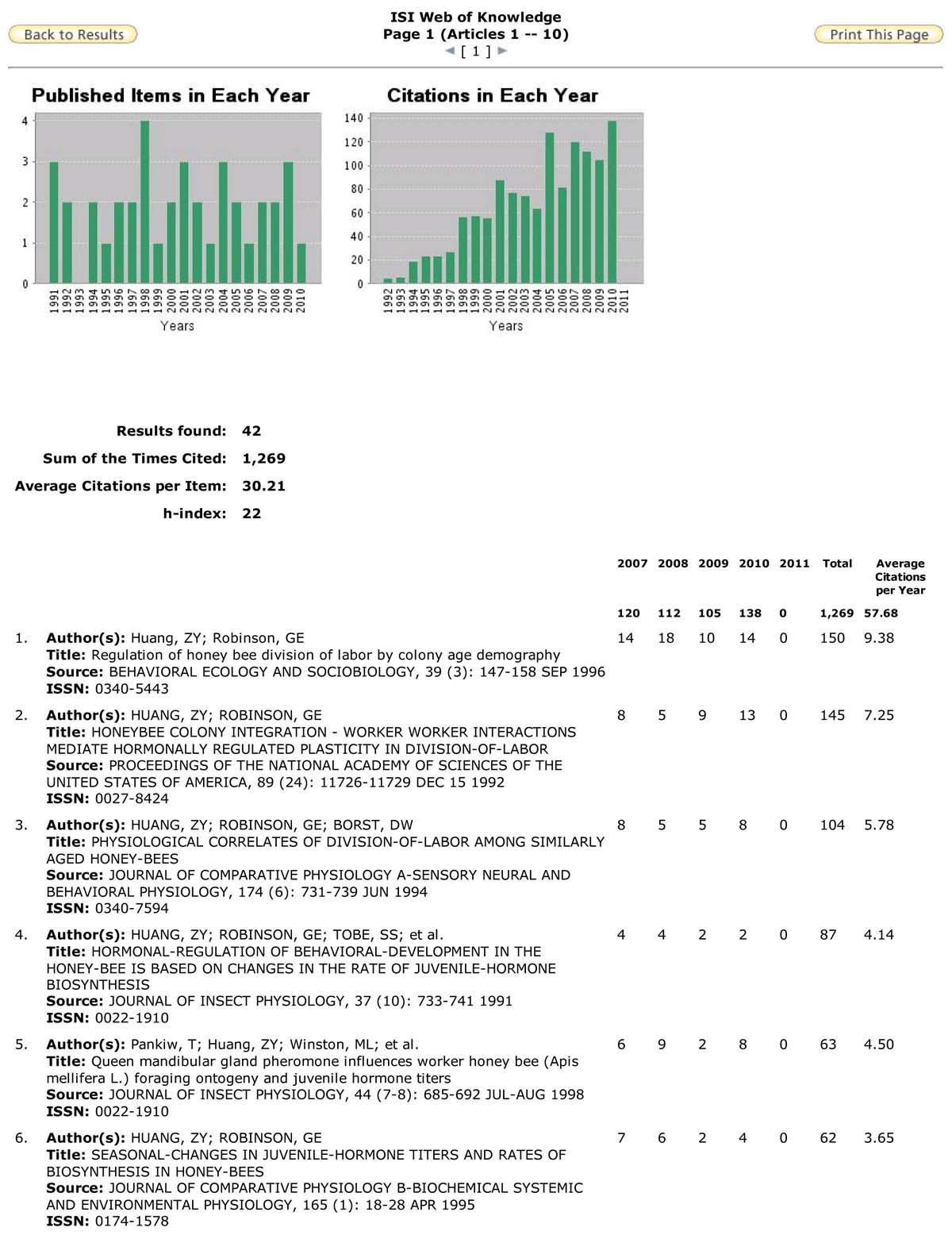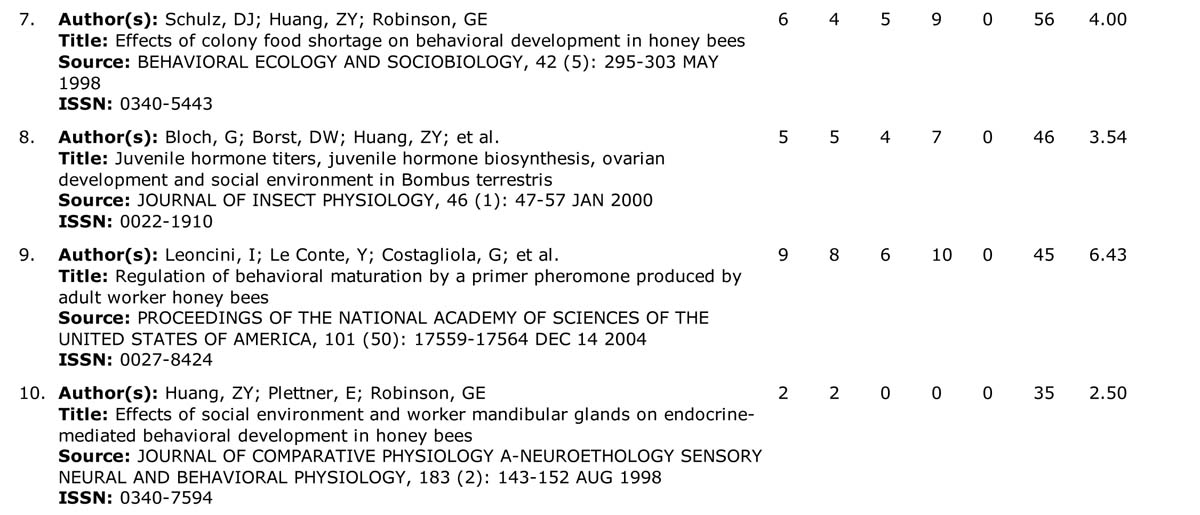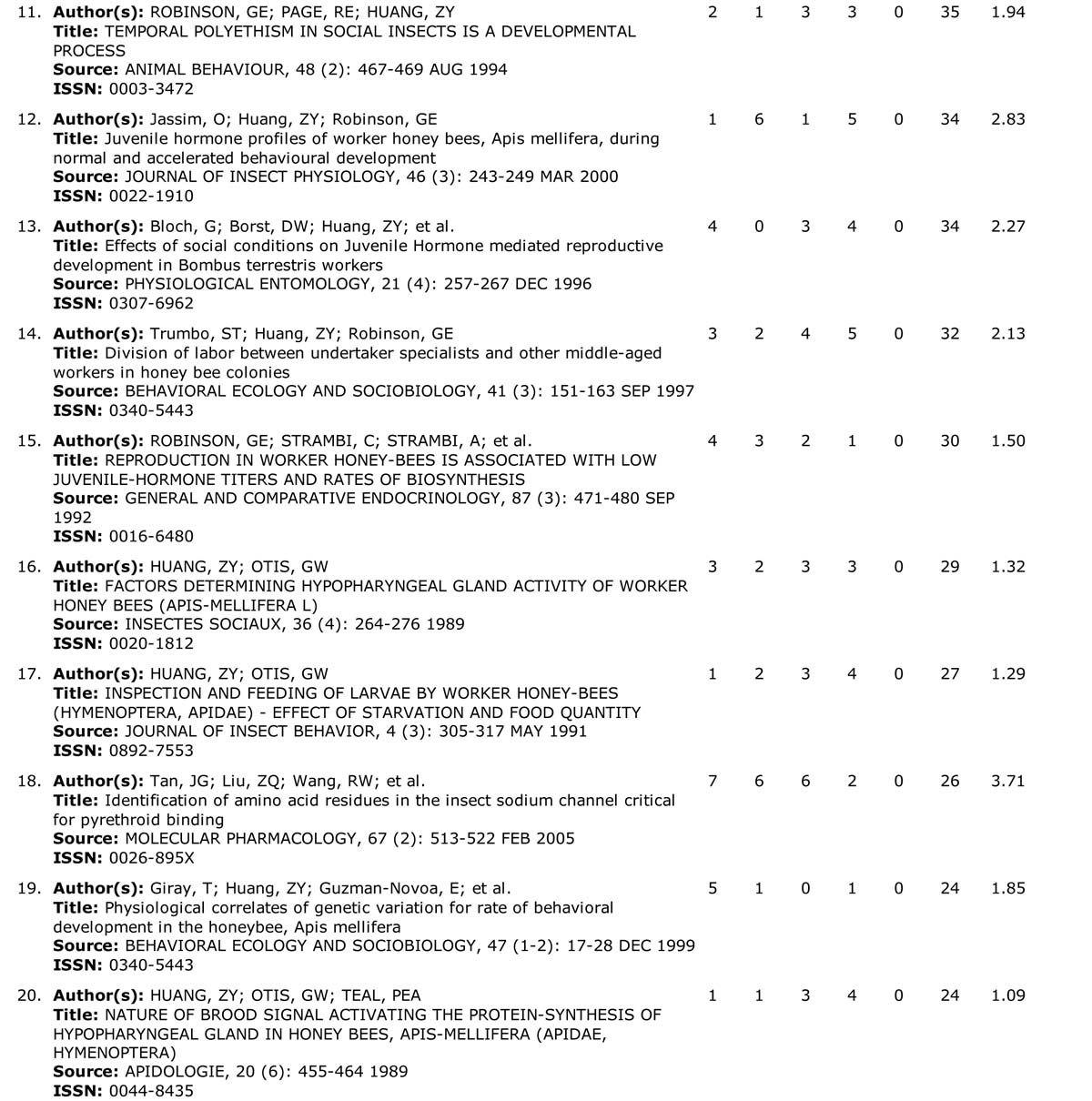Last night, I got curious and checked my H-index. H-index is the n-th paper that is cited n times. so if the 10th ranked paper (high to low) had 10 citations, then the H-index would be 10.
Mine is 22.
According to Hirsch, who invented the H-index:
1. A value of m ≈ 1 (i.e., an h index of 20 after 20 years of scientific activity), characterizes a successful scientist.
2. A value of m ≈ 2 (i.e., an h index of 40 after 20 years of scientific activity), characterizes outstanding scientists, likely to be found only at the top universities or major research laboratories.
3. A value of m ≈ 3 or higher (i.e., an h index of 60 after 20 years, or 90 after 30 years), characterizes truly unique individuals.
This is the 21st year after my first publication (1989), not counting 2011 yet, of course. so I guess I am “successful”! Which really means “average”, if you read the paper in context.
He also says that ” for faculty at major research universities, h ≈ 12 might be a typical value for advancement to tenure (associate professor) and that h ≈ 18 might be a typical value for advancement to full professor..Membership in the National Academy of Sciences of the United States of America may typically be associated with h ≈ 45 and higher, except in exceptional circumstances.”
Ok, so not quite up to the level of Academy yet, but I am ready to become a full professor…(Thank you, Dr. Hirsch!).
–The Web of Science was search conducted on Jan 9, 2011, it always misses quite a few of my papers (e.g. at least 2 papers with 20 citations were not in the list)…but it does not affect the H-index unless the missed ones were ranked high in the list.




update on Feb 14, 2012:
One can register an id at researcherid.com and simplify H-index calculation. Mine is http://www.researcherid.com/rid/D-5485-2011